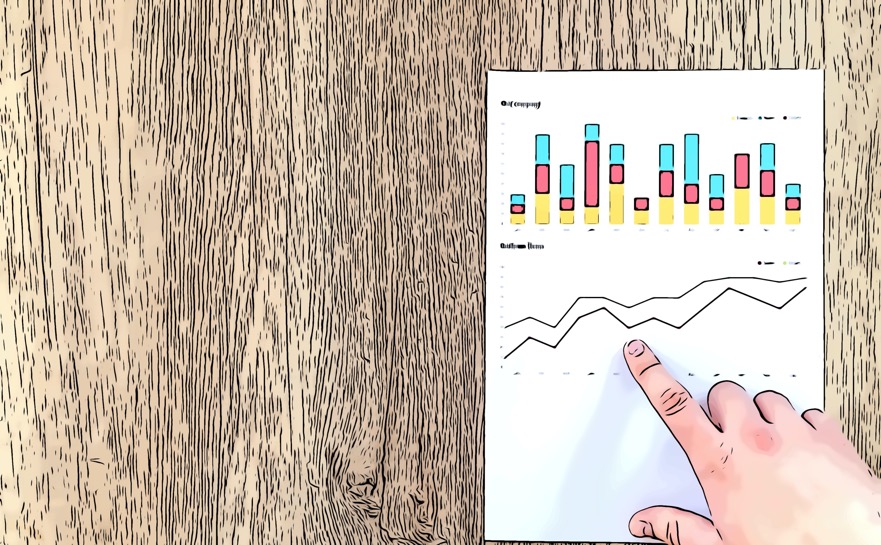Whether it’s running effective ad campaigns or crafting the perfect message, market segmentation should be a fundamental part of every strategy.
You have spent the time building a B2C or B2B marketing strategy, and now it’s time to make sure that it resonates with the right audiences.
As audiences get bigger, it can be easy to overlook the value of clear and concise messaging. The bigger an audience, the more diverse the needs of that audience are, any digital marketing course will tell you that. That’s where market segmentation comes in, allowing you to focus your B2B marketing efforts on specific segments.
Segmentation provides an edge over the competition as you can prove that you understand who your audience is and what they need most.
Table of Contents
What is market segmentation?
Market segmentation is the process of dividing audiences into smaller groups that share the same characteristics to optimize marketing and advertising and sales results.
This practice is a standard business practice that involves identifying key traits that group audiences and using these to build more specific audiences. Market segmentation also allows brands to create more personalized ads, marketing, and sale journeys.
At the heart of this is the idea that consumers are likely to respond to more personal and customized messaging and campaigns. As a marketer, it’s hard to appeal to your entire audience with a single message. Some might respond differently to a specific message. That’s why market segmentation is essential – it the method of segmenting audiences to provide a more tailored solution.
Types of market segmentation
There are many types of market segmentation. Generally, these methods can be defined into four main categories.
Geographic
Geographic market segmentation is the process of targeting consumers based on a defined geographical boundary. Consumer interests can vary dramatically between different regions, and often preferences can be similar across smaller geographic areas.
Sometimes this process of market segmentation can be a simple as weather associated with a geographical location. It wouldn’t be very productive to sell warm clothes to a region where temperatures are low year-round.
Broader regional segmentation includes looking at countries, cities, and postcodes to group audiences. Specific postcodes can determine household income and even interests.
Geography goes hand in hand with both language and culture. Understanding and segmenting your audiences based on location can help to convey the right message (think soccer in the US and football in the UK).
There are many ways of understanding location, from surveys and addresses through to more up to date and accurate solutions such as location data providers.
Demographic
Demographic segmentation is a powerful way of creating specific audience segments that share similar preferences and requirements.
This form of segmentation is a standard method as many targeting and adtech solution provides some way of doing this when building audiences. It’s essential to do the same to your audiences or customer base to segment effectively.
Traditional demographic breakdowns include age, gender, marital status, occupation, education, income, race, nationality, and religion.
Demographic market segmentation is vital to finding product-market fit, but it’s also a powerful way to determine which channel is the best fit. Optimizing channel delivery relies heavily on reaching the right person in the right medium. Demographics are a great way to do this.
Media consumption changes significantly between demographics, so it’s essential to use this form of segmentation effectively to engage your audience the right way.
Behavioral segmentation
Segmenting audiences based on behavior is a popular solution in today’s digital world. Improvements in technology have enabled more touchpoints with greater detail into how audiences behave.
Behavioral analysis provides more options for market segmentation based on how audiences interact with your business. There are many behavioral-based traits to segment audiences, including:
- Web activity – how consumers behavior on your website is valuable behavioral data. Segmenting audiences based on time spent, which pages they visit, and other measurable traffic insights is a powerful way to divide larger audiences into potentially effective smaller segments.
- Usage with your current product or services. These includes app usage, platform usage, or perhaps just the fact that the person has purchased the last three versions of your physical product. These factors are a great indication of loyalty and where consumers sit in the funnel.
- Offline behavior – movement data can help you to understand behavior in the real world. This an effective way of building segments that are grouped based on real-world movement. Segments such as gym-goers or coffee drinkers are powerful as they combine behavioral and geographical elements.
Psychographic
This method of market segmentation is focused more on the intrinsic traits of audiences. It’s similar in a way to demographic segmentation, but it’s more concerned with the emotional and other underlying factors that audiences believe in.
These kinds of insights can be valuable in understanding the motivations, needs, and exact preferences of audiences to create highly personalized segments.
Psychographic traits include personality, values, motivations, opinions, and lifestyle choices.
There are many ways of collecting this kind of information, including surveys or in some sort of feedback process. But offline and online behavior can also be a good indicator of psychographic traits.
Why market segmentation
So now you are aware of the four main methods of market segmentation. It’s time to understand why it’s worth doing. Many marketers identify improved audience segmentation as the most critical priority. Market segmentation offers many benefits to publishers, marketers, apps, and other businesses.
Improves the effectiveness of advertising campaigns
Market segmentation can help to improve marketing activity and advertising campaigns by reaching the right person with the right message at the right time. Segmenting your audiences allows you to provide more personal and engaging advertising, rather than a one size fits all approach.
Targeting a specific audience allows you to tailor the message and timing so that the audience is more likely to respond and engage with your campaigns. Targeting your entire audience with a single campaign is hugely wasteful. A considerable amount of the audience will not be relevant to the campaign, and thus you will be wasting revenue.
Essentially segmentation means that you can remove the irrelevant consumers from this audience, ensuring that you optimize ad budgets, increase ROI and improve the effectiveness of advertising campaigns.
Even if your product or service sits across a broad audience of potential customers, it’s still essential to segment audiences. Some messages will sit better with different segments and work better across different channels, even if the product is the same.
Informs new products and product development
Segmentation is also a useful tool to drive product innovation and can help to hone product strategy. These insights means that product teams can create products that better fit the needs of their customers.
Market segmentation can also identify a need for more specific products that sit in smaller groups within your customer base. Segmenting products is powerful because it helps to sell more and will make customers happier.
Helps to identify new audiences and segments
This process is useful when looking at maximizing the effect of your marketing strategy, but it can also be valuable when looking to grow and scale.
Segmenting your current audience can identify new traits that you didn’t know existed. Seeing this can open up new opportunities related to the newly identified segment. These opportunities can lead to new, engaging marketing campaigns or can even lead to the inception of new products and services that are in need but not currently offered.
Improves business functions and can help to make big decisions
Market segmentation can help a business to understand precisely what their customers want and focus their efforts on these to create a highly specific and valuable product or service. This specification could significantly improve brand perception, lead to more sales, and increase repeat business and engagement.
These insights can lead to better decisions across the business. From product-market fit to product delivery and communication, market segmentation can help to identify the best ways to go about these important issues.
Audience segmentation can also help with decisions such as pricing and can even help inform dynamic pricing strategies.
Common mistakes
There are some common pitfalls that you should look out for when creating your market segmentation strategy.
Too small segments
The most common problem is that businesses go a little over the top with segmentation. Set too many parameters with too much detail, and then end up with a tiny audience.
This mistake means that you will eliminate audiences that don’t fit into your filter but still carry purchase potential. As well as this, you will lose the opportunity to gain quantifiable metrics and insights into specific audience segments.
Make sure you think carefully about how to segment your audience. One or two filters work best, depending on the size of your total audience and total addressable market, of course. The sweet point between segmentation and scale is extremely valuable if you can find it, so be sure to experiment extensively!
Not up to date
Predominantly in the world of traits of digital marketing and advertising, a common mistake is that marketers identify key audience segments that work for their business. But they fail to update these as the needs and products change over time.
Always stay on top of your strategy and constant update and tinker with new methods of segmentation.
Targeting segments that don’t convert
Another common mistake is to identify segments that are both large enough and up to date. But these segments still need to carry conversion or purchase potential.
If the segmentation method creates a group that is not a good product fit and does not have the necessary buying power, then the ROI will not improve just because the audience is segmented.
What is market segmentation?
Market segmentation is the process of dividing their audiences into smaller groups that share the same characteristics to optimize marketing and advertising and sales results.
Why is marketing segmentation important?
Marketing segmentation allows companies to reach consumers with precise needs in a personlized and relevant way.
What is the goal of market segmentation?
Market segmentation can improve the effectiveness of marketing efforts, drive conversions and increase ROI.
James is the head of marketing at Tamoco




Leave a Reply